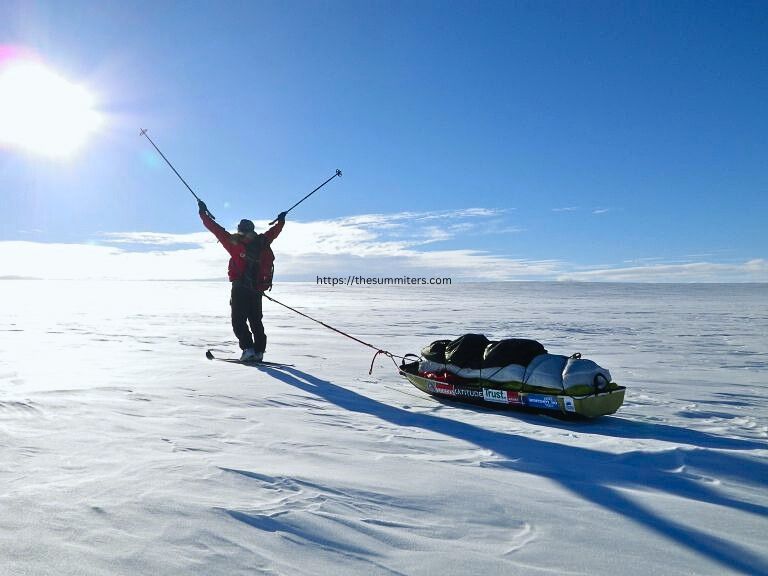In a flurry of last-minute anticipation, Colin O Brady, an adventurer whose exploits have courted controversy, stands poised to undertake an unsupported solo ski speed challenge from Hercules Inlet to the South Pole.

The existing record, held by Norwegian Christian Eide since 2011, stands as a testament to human endurance and resilience, clocking in at an astounding 24 days, 1 hour, and 13 minutes. Regarded as one of the most awe-inspiring accomplishments in polar exploration, Eide’s record has loomed large over subsequent attempts.
However, O’Brady’s name has been a topic of conversation within the polar community, more for his public profile than his credibility due to past incidents of exaggeration. His sudden announcement has overshadowed the preparations of Vincent Colliard, a seasoned French polar explorer who had been gearing up for a similar record attempt and had already set course for Antarctica.
This impromptu revelation isn’t unfamiliar territory for O’Brady. In 2018, he stealthily unveiled his plans for an Antarctica crossing a mere five days before Lou Rudd embarked on a comparable journey, despite Rudd openly sharing his intentions a year earlier.
Adding an extra layer of intrigue to the unfolding narrative, there’s murmuring about another participant—a female skier operating incognito, her identity yet concealed, aiming to challenge Caroline Cote’s female speed record set just the year before along the Hercules Inlet route.
While O’Brady’s eleventh-hour announcement might seem strategic, an attempt to commandeer attention, it might equally signify a spontaneous decision triggered by learning of Colliard’s endeavor. The potential for a riveting head-to-head race, echoing O’Brady’s prior rivalry with Rudd, emerges as a compelling storyline. Despite briefly hosting a reality TV show, O’Brady had largely retreated from the public eye after an unsuccessful bid on Winter K2 in 2021.
Crafting a competitive showdown with Colliard might be a risky move unless O’Brady has meticulously strategized around Colliard’s strengths and weaknesses. However, if neither manages to break Eide’s enduring record, the race between them could salvage a captivating narrative for sponsors and enthusiasts alike.
Breaking Eide’s record poses an immense challenge. Eide had meticulously prepared, skiing across Greenland twice in the year leading up to his South Pole expedition, scaling Mount Vinson, and conquering the Last Degree. His lifelong expertise in cross-country skiing since the tender age of two bestowed upon him a unique advantage over most polar explorers, optimizing his equipment for optimal performance.

Despite his unparalleled achievement, Eide extends words of encouragement to Colliard and O’Brady, emphasizing the mental fortitude required for such an endeavor and expressing a belief that records are meant to be surpassed.
This cloak-and-dagger atmosphere enveloping South Pole endeavors, reminiscent of the historical race between Amundsen and Robert Scott in 1910, ironically persists within the sphere of explorers seemingly most fixated on publicity. The thrill of secrecy interwoven with the pursuit of remarkable feats echoes through this present-day tale of daring and ambition amidst the icy expanse of Antarctica.
Read More: Mattia Conte Joins Alex Txikon on Winter Annapurna Expedition